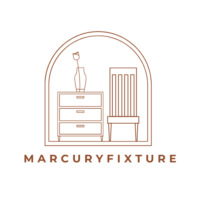Townhouses, with their unique architectural style and compact spaces, offer a delightful canvas for interior design enthusiasts. They’re the perfect blend of cozy and chic, and with the right design approach, one can transform them into a haven of style and comfort.
Townhouse Interior Design

Within the realm of townhouse decor, certain trends surface as top choices. Color blocking, for instance, proves popular, dividing visual area effectively, making a room seem more spacious. Another trend, multipurpose furniture, seems to be a common choice for those aiming to maximize space utilization; for example, coffee tables that lift to become working desks.
Lighting also plays a key role, with pendant lights and LED strip lights adding depth and layers to narrow spaces. Natural materials, too, are gaining traction; think wooden accents paired with leather furniture. Similarly, indoor plants have become a staple, bringing a touch of nature indoors, and enhancing the overall living experience.
How Design Differs Regionally
Townhouse interior design varies considerably as one moves from one region to another. Spatial distribution, cultural influences, available materials, and the local climate play defining roles. For instance, in cities with a more Mediterranean climate, such as Los Angeles, one might notice open floor plans, abundant natural lighting, and the use of color palettes that reflect the sea and sun. Meanwhile, New York townhouses lean towards maximizing vertical space due to inherent housing density; multi-level design, loft bedrooms, and skylights are common features. On the other hand, British townhouses often display classic, understated elegance with emphasis on traditional elements such as molded ceilings, wooden staircases, and sash windows.
Key Elements of Townhouse Interior Design

Townhouse interior design goes beyond mere aesthetics, embodying functionality, uniqueness, and a reflection of locale nuances. Optimal use of space remains a crucial element. Designers often incorporate vertical storage solutions, hidden compartments, or transformable furniture to capitalize on every square inch. For instance, loft beds in New York or built-in nooks in London’s houses.
Lighting plays a significant role too; strategic placement of light fixtures, application of natural light, and choice of light colours contribute to creating atmospheric interiors. Similarly, color strategies help in altering spatial perceptions; lighter hues expand spaces, while darker tones add depth.
Moreover, themes and materials show regional variations. Coastal themes and natural materials dominate Los Angeles, demonstrating its beachy vibe, whereas classic elegance derived from intricate molding and hardwood elements define British townhouses. This mix of aesthetic choices and utilitarian priorities encapsulates the essence of Townhouse interior design.
Design Challenges and Solutions
In townhouse interior design, several challenges arise, from space constraints to maintaining the character of the house while incorporating modern elements. However, these challenges often yield innovative solutions and unique designs.
One common challenge is limited space, particularly in vertical townhouses. A solution lies in maximizing vertical space with wall-mounted shelves, hanging plants, and tall, slender furniture. It’s also advantageous to make use of transformable furniture, such as Murphy beds and foldable desks. Another challenge rests in creating a natural flow in the interior design while respecting the locale’s distinct aesthetics. In Los Angeles, interior designs often lean towards open layouts and coastal-inspired schemes. In contrast, Britians opt for traditional elegance.
Inspirational Townhouse Design Ideas

It’s clear that townhouse interior design is a blend of creativity, functionality, and personal style. The article has shown how homeowners can transform their spaces through color blocking, multipurpose furniture, and strategic lighting. Whether it’s embracing the open layouts of Los Angeles, the vertical space optimization of New York, or the classic elegance of British townhouses, there’s a design solution for everyone.
Overcoming design challenges such as limited space and lighting issues is possible with innovative solutions like maximizing vertical space, using transformable furniture, and strategic use of mirrors and light colors. With these techniques, it’s possible to maintain the character of the house while incorporating modern elements.
So, whether you’re a homeowner looking to redesign your townhouse or a designer seeking inspiration, remember that the key is to blend functionality, aesthetics, and personal style while reflecting the essence of local environments and communities.



